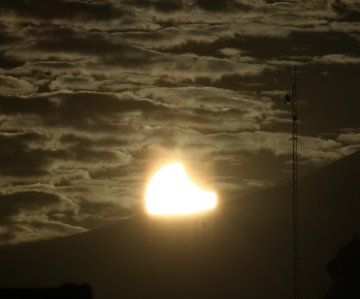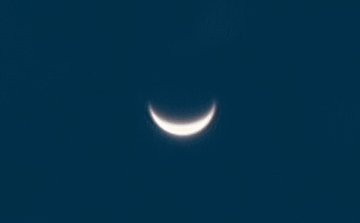 Where's Saturn? Is that a UFO--or the ISS? What's the name of that star? Get the answers from mySKY--a fun new astronomy helper from Meade. . Where's Saturn? Is that a UFO--or the ISS? What's the name of that star? Get the answers from mySKY--a fun new astronomy helper from Meade. . SPACE WEATHER WORKSHOP: Researchers are converging on Boulder, Colorado, this week for a major scientific workshop on solar physics and space weather forecasting. Topics range from explosions on the sun to magnetic storms on Earth--and everything in between. Stay tuned for highlights. PARTIAL ECLIPSE--TODAY! This morning in a remote stretch of ocean between Tierra del Fuego and Antarctica (map), the moon eclipsed 75% of the sun. A lesser but still beautiful eclipse was visible across the southern half of South America. In Peru, Jan Hattenbach caught the partial sun rising over the slopes of the Pichu Pichu volcano: 
The next partial eclipse: Feb. 7, 2008. Book your tickets to Antarctica! more images: from Samuel Leite Guimarães of Uberlândia, Brazil; from Erwin Sandoval Vargas of Coyhaique, Chile; from Guilherme Grassmann of Americana, Brasil; MORNING STAR: Venus has returned to the morning sky and it is truly impressive beaming through the rosy glow of dawn. The planet is so bright, it remains visible even after the sun rises in full--hence the blue sky in this photo submitted by Chris Schur of Payson, Arizona: 
Schur spotted Venus after sunrise and "the opportunity to image it was irresistable," he says. "I took the photo using my 12.5 inch telescope just as Venus was clearing the treetops at 9:30 a.m." Venus seems to be grinning at us. That's because, like the Moon, Venus has phases and at the moment it is a slender, smiling crescent. Wake up early, look east, and you may find yourself smiling back: sky map.
September 2007 Aurora Gallery
[August 2007 Aurora Gallery] [Night-sky Cameras] | 
